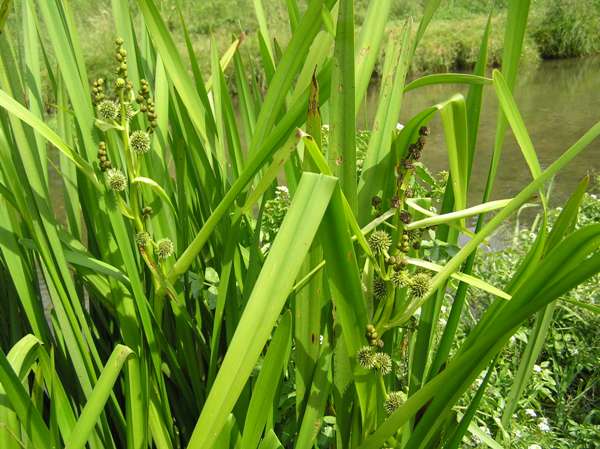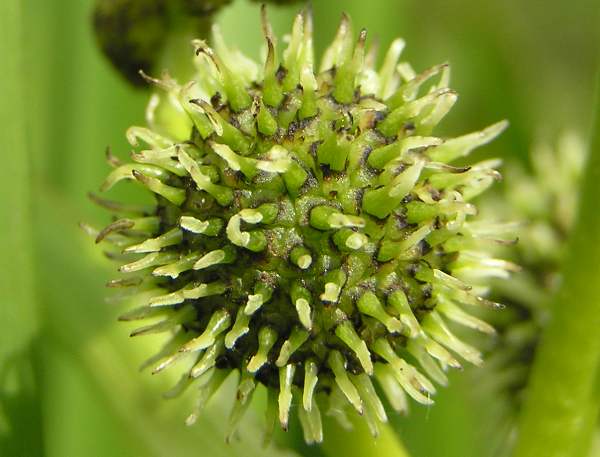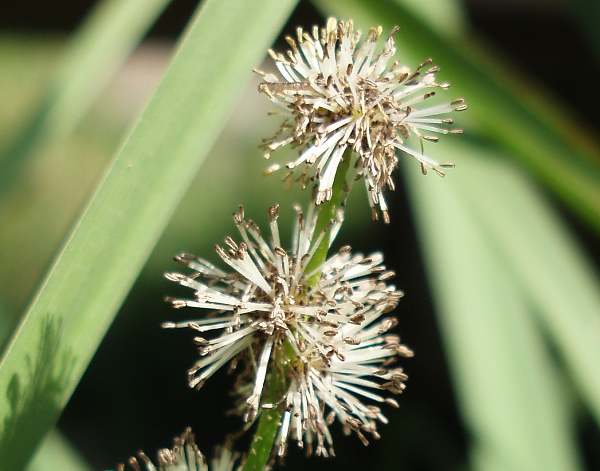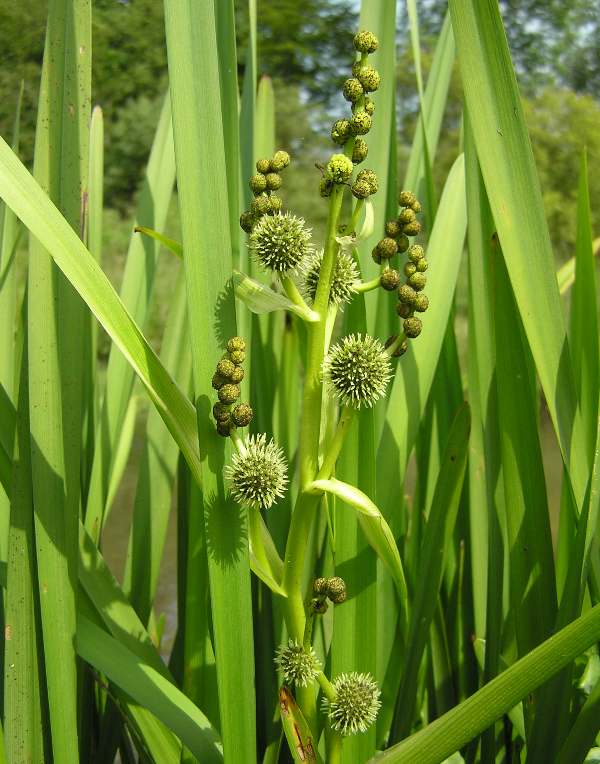Sparganium erectum - Branched Bur-reed
Phylum: Magnoliophyta - Class: Equisetopsida - Order: Poales - Family: Sparganiaceae

Description
Branched bur-reed can reach a height of 1.5 metres. The flower stalk is branched (unlike its relative the Unbranched Bur-reed in which a single stem witout branches carries the flowers) The leaves are usually erect but occasionally they lie floating on the surface of the water. Individual flower clusters are unstalked, those at the top of the spike being male whereas the larger bur-like fowers lower down are female.

Above: bur-like female flowers
Distribution
Branched Bur-reed is common and widespread throughout Britain and Ireland except for the far north.

Above: mature male flowers of Sparganium erectum
Habitat
This fairly common aquatic plant grows in the water at the edges of lakes and slow-flowing rivers.

Blooming times
The strange spiked flowers appear in July and August.
Uses
Adult reed smutts (Simulium species) are often seen sunning themselves on the leaf stems in summer.
The plants shown on this page were photographed beside the River Meon, Hampshire UK, in July.
Sue Parker's latest ebook is a revised and enlarged second edition of the acclaimed Wildflowers in the Algarve - an introductory guide. Full details here...
Buy it for just £3.95 on Amazon...
Please Help Us: If you have found this information interesting and useful, please consider helping to keep First Nature online by making a small donation towards the web hosting and internet costs.
Any donations over and above the essential running costs will help support the conservation work of Plantlife, the Rivers Trust and charitable botanic gardens - as do author royalties and publisher proceeds from books by Pat and Sue.



